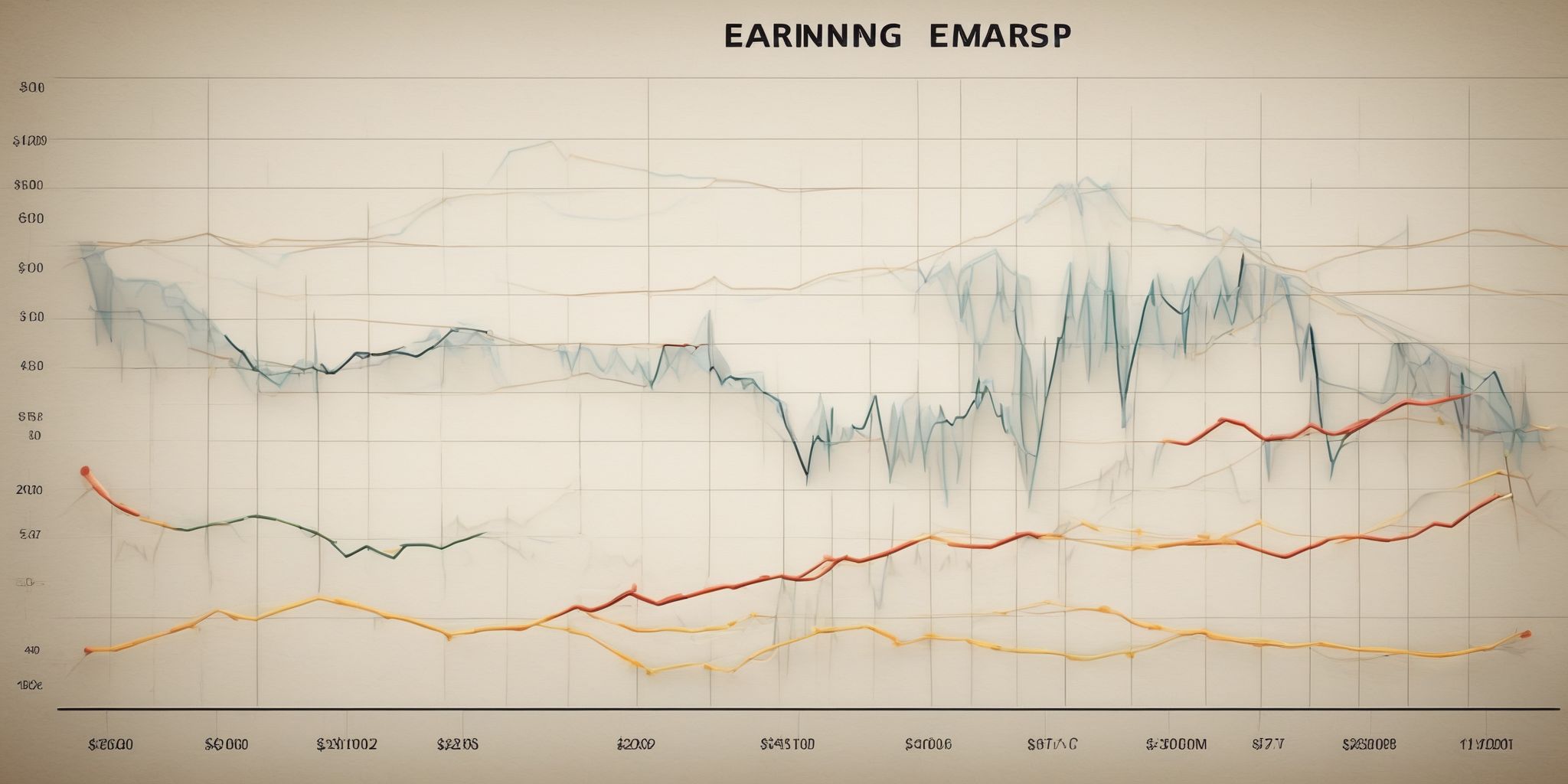Behind the Scenes: Inside an Insurance Organization
Have you ever wondered what goes on behind the scenes at an insurance organization? While insurance may seem like a complex industry filled with jargon and paperwork, there's a whole world of fascinating activities happening that most people seldom get a glimpse of. From risk assessment to claims handling, underwriting to customer service, join us on a journey as we take you inside an insurance organization and unveil the intriguing operations that keep this industry running smoothly.
Get readyto discover the untold stories and the human side of insurance, as we unravel the mysteries and myths surrounding this essential sector.
What is an Insurance Organization?
An insurance organization is a company that provides insurance policies to individuals or businesses to mitigate financial risk. These organizations assess the risk profile of their customers and offer policies tailored to their needs.
For example, an auto insurance organization might offer coverage for accidents, thefts, or damages to a vehicle.
Additionally, insurance organizations also handle claims when a policyholder experiences an insured loss, providing financial compensation or assistance. With their expertise in risk management, insurance organizations play a significant role in promoting financial stability and protecting individuals and businesses from potential losses.
Importance of Insurance Organizations
Insurance organizations play a vital role in protecting individuals and businesses from financial losses due to unexpected events. They provide a safety net that helps mitigate the risks associated with accidents, disasters, and other unfortunate circumstances. By offering the necessary coverage, insurance organizations enable individuals and businesses to confidently navigate through life's uncertainties.
For example, in the event of a car accident, an auto insurance policy can help cover the costs of repairs and medical expenses. Insurance organizations also contribute to the overall stability and growth of the economy by spreading risks across a large pool and providing financial support in times of need.
Overview of the Insurance Industry
The insurance industry is tasked with managing risk by providing financial protection to individuals and businesses. Its primary function is to offer insurance policies that cover potential losses and damages. This sector encompasses various types of insurance, such as life, health, property, and auto insurance, among others. Insurance organizations evaluate risks, set premium rates, and pay out claims when necessary.
For instance, in the event of a car accident, an auto insurance company wouldfinancially support the policyholder by covering repair costs or medical expenses.
Key Roles and Departments within an Insurance Organization
Insurance Underwriting Department
The Insurance Underwriting Department is responsible for assessing and evaluating risk for insurance organizations. They analyze data, review applications, and determine an appropriate premium for each policy. By using their expertise to accurately assess risk, they help insurance companies minimize potential losses and maintain profitability.
For example, they may review an applicant's driving history to decide on a suitable car insurance premium. The department plays a crucial role in ensuring that insurance companies can provide coverage to their customers while managing risk effectively.
Role of Underwriters
Underwriters in insurance organizations help evaluate risk, set premiums, and determine coverage. They provide a crucial link between the insurance company and the policyholder, ensuring that both parties are protected. By analyzing data and using their expertise, underwriters assess the likelihood of claims and develop policies that align with the company's risk appetite.
For example, they may review an applicant's driving history to determine the auto insurance premium. Underwriters also play a significant role in ensuring profitability for insurance companies by carefully managing risks. Their actions directly impact the pricing and availability of insurance products, making them instrumental in the success of the organization.
Risk Assessment and Policy Pricing
Risk assessment is an integral part of policy pricing for insurance organizations. By evaluating and analyzing various risks associated with a particular policy, insurers can determine an appropriate premium for coverage. Factors such as age, driving record, and past claims history are taken into account to assess the level of risk a policyholder poses.
For example, a young driver with a history of accidents will likely be charged a higher premium than an older driver with a clean record. This process helps insurance companies mitigate potential losses and ensures fair pricing for customers based on their risk profiles.
Claims Department
The Claims Department is a vital component of any insurance organization. It is responsible for assessing and processing insurance claims efficiently and accurately. Here are a few key points about the Claims Department:
- Timely and accurate claims processing is essential to ensure customer satisfaction and trust.
- The department plays a significant role in managing the financial risks associated with insurance policies.
- A well-functioning Claims Department helps strengthen the overall reputation of the insurance organization.
- Effective communication and collaboration within the department, as well as with other departments, are crucial for smooth claims processing.
- The Claims Department also plays a vital role in identifying and investigating potentially fraudulent claims, protecting the organization's interests.
Handling the Claims Process
Efficiently managing the claims process is vital for insurance organizations. Promptly investigating and processing claims helps maintain customer satisfaction and loyalty. To expedite the process, digital claim management systems can streamline data collection, evaluation, and settlement. Clear communication with the policyholder is crucial throughout, ensuring they understand the required documents and the timeline for resolution. By promptly resolving claims and offering fair compensation based on policy terms, insurance organizations can build a positive reputation and retain existing customers.
Investigation and Documentation
- Thorough examination and documentation of claims is fundamental in the insurance industry.
- By conducting investigations, insurance organizations can gather essential information to accurately assess the validity of claims.
- Documenting the entire process helps establish a transparent and traceable record to ensure accountability.
- This includes documenting the initial claim, gathering supporting evidence, and recording any relevant conversations or interviews.
- Practical examples of investigation and documentation processes could include verifying medical treatment records, interviewing witnesses, or analyzing damaged property.
- By maintaining this balance between theoretical insights and practical examples, insurance organizations can effectively navigate the claims process and provide prompt and accurate resolutions.
Sales and Marketing Department
The Sales and Marketing Department is responsible for promoting and selling insurance products, as well as creating and implementing effective marketing strategies. They play a significant role in driving the organization's revenue growth and building customer relationships. By identifying target segments and tailoring marketing campaigns accordingly, they can effectively reach potential customers.
This can be achieved through various channels such as online advertising, social media marketing,and direct sales. The department continuously analyzes customer feedback and market trends to adjust strategies and remain competitive in the industry.
Insurance Product Development
Insurance product development involves the creation and enhancement of insurance policies to meet ever-changing customer needs and market demands. It requires thorough market research and analysis to identify gaps and opportunities. Through innovative product design, insurers can offer unique features and coverages that differentiate them from competitors.
For example, an insurance organization may develop a new cyber insurance policy to protect customers against the rising threat of online fraud. Effective product development also involves rigorous testing and constant refinement to ensure products remain relevant and competitive in the marketplace. By continuously improving their insurance offerings, organizations can attract and retain customers while driving business growth.
Marketing Strategies and Customer Acquisition
Marketing strategies and customer acquisition are vital for insurance organizations to attract and retain customers. One effective strategy is targeting specific customer segments by understanding their needs and preferences.
For example, targeting young professionals by offering tailored policies for their lifestyle can increase customer engagement. Another strategy is leveraging digital platforms to reach a wider audience. Utilizing social media and search engine optimization techniques can enhance brand visibility and generate leads.
Additionally, offering personalized experiences and incentives like discounts or referral programs can encourage customer loyalty. These strategies allow insurance organizations to differentiate themselves in a competitive market and drive customer acquisition.
Actuarial Department
The Actuarial Department in an insurance organization plays a crucial role in managing risk and ensuring financial stability.
It uses mathematical models and statistical analysis to assess risks, project future claims, and calculate premiums.
Some of the key responsibilities of the Actuarial Department include:
- Determining appropriate pricing for insurance policies based on risk assessment
- Estimating reserves to meet future obligations
- Conducting financial analyses and providing insights for decision-making
- Developing and maintaining actuarial models and tools for accurate calculations
By leveraging their expertise, actuarial professionals help to ensure the sustainability and profitability of the insurance company, enabling it to provide effective coverage to policyholders and maintain a competitive edge in the market.
Insurance Pricing and Risk Analysis
Insurance pricing and risk analysis are integral components within an insurance organization. By assessing potential risks and determining appropriate premiums, insurers can maintain financial stability while providing coverage for policyholders. This process involves analyzing historical data, market trends, and underwriting policies to accurately evaluate risk levels.
For example, a car insurance company may consider the driver's age, driving history, and the type of vehicle when determining the premium. Effective risk analysis ensures that insurance pricing aligns with the potential costs of claims, reducing the likelihood of financial losses for the insurer while offering fair pricing for customers.
Statistical Modeling and Predictive Analytics
Statistical Modeling and Predictive Analytics play a significant role in the insurance industry, enabling organizations to make informed decisions and improve their operations. By analyzing historical data and applying statistical techniques, insurers can identify patterns and trends to predict future outcomes accurately. This allows them to assess risks, set pricing strategies, and optimize underwriting processes.
For example, statistical modeling can help insurers estimate the probability of claims occurrences or identify fraudulent activities.
Additionally, predictive analytics can assist in targeting specific customer segments, improving customer satisfaction, and reducing churn. Incorporating these methodologies into insurance operations empowers organizations to stay competitive and enhance their overall performance.
Technology and Innovation in Insurance Organizations
Automation and Artificial Intelligence (AI) in Insurance
Automation and AI have drastically transformed the insurance industry, streamlining processes and enhancing customer experiences. Claim processing, underwriting, and fraud detection are areas where automation and AI have shown significant results.
For example, by utilizing machine learning algorithms, insurers can quickly analyze large volumes of data and identify patterns to predict and prevent fraudulent activities.
Additionally, chatbots powered by AI technology can provide accurate and prompt responses to customer inquiries, improving overall satisfaction. Implementing automation and AI solutions can increase efficiency, reduce costs, and enable insurance organizations to better serve policyholders.
Regulatory Compliance and Risk Management
Overview of Insurance Regulations
Insurance regulations are an integral part of the insurance industry. They provide guidelines and rules that insurance organizations must adhere to in order to operate legally and maintain consumer protection. These regulations ensure that insurance companies handle claims fairly, maintain sufficient financial reserves, and disclose information accurately.
For example, regulations may require insurance companies to have a certain amount of capital to ensure they can fulfill policyholder claims.
Additionally, regulations often require insurance organizations to provide clear and transparent information to their customers, such as policy terms and conditions.
Risk Assessment and Mitigation
Risk assessment and mitigation are essential for insurance organizations. Conducting thorough risk assessments helps insurers identify potential hazards and evaluate their likelihood and impact. This allows them to develop effective strategies to minimize risks and protect their business. For instance, analyzing historical data can reveal patterns and trends that steer insurers towards offering more tailored coverage policies.
Mitigation measures, such as creating contingency plans or investingin risk reduction technologies, further enhance an insurer's ability to manage potential losses. By continuously monitoring and reassessing risks, insurance organizations can make informed decisions and optimize their risk management strategies.
Challenges Faced by Insurance Organizations
Increasing Competitiveness in the Market
To increase competitiveness in the insurance market, organizations should focus on differentiation. This means offering unique products or services that set them apart from competitors.
For example, they can develop innovative coverage options or tailor their offerings to specific customer segments. Another strategy is to improve customer experience. By streamlining processes and providing excellent service, organizations can attract and retain customers.
Additionally, embracing technology is crucial. Utilizing data analytics and digital platforms can help organizations streamline operations, enhance underwriting efficiency, and offer more personalized solutions.
Changing Customer Expectations
Customer expectations in the insurance industry are evolving rapidly. With advancements in technology and a shift towards a digital world, customers now expect a seamless and personalized experience. This means that insurance organizations need to adapt and offer innovative solutions to meet these changing expectations.
For example, customers now expect quick and hassle-free claims processes, with the ability to submit and track claims online.
Additionally, personalized communication and tailored products are becoming increasingly important to customers, who are seeking more than just a one-size-fits-all approach from their insurance providers. To stay competitive in this evolving landscape, insurance organizations must continually assess and update their customer experience strategies.
Emerging Technologies and Cyber Risks
Emerging technologies bring new opportunities, but also new risks for insurance organizations. Cyber risks, in particular, have become a major concern. As more transactions and data are being processed digitally, the potential for cyber attacks and data breaches increases. Insurers should invest in robust cybersecurity measures to protect their sensitive information and customer data. This includes implementing strong encryption, regular security audits, and employee training programs.
Additionally, staying informed about the latest cyber threats and vulnerabilities is crucial for insurers to continuously evolve their cybersecurity strategies. By doing so, insurance organizations can mitigate the potential financial and reputational damages caused by cyber risks.
Final thoughts
Insurance organizations play a crucial role in protecting individuals and businesses from financial risks. However, many people are unaware of the complex processes and intricate systems that operate behind the scenes. This article takes readers on an intriguing journey inside an insurance organization, shedding light on the various departments and functions involved.
From underwriting and claims management to actuarial science and risk assessment, every step in the insurance process is carefully orchestrated to ensure clients receive adequate coverage while maintaining the company's profitability. The article highlights the technological advancements that have revolutionized the industry, with advanced software and data analytics being used to assess risks, personalize policies, and streamline operations. Moreover, it delves into the critical role of actuaries in determining insurance premiums and analyzing probabilities.
It also emphasizes the importance of effective communication and collaboration within an organization, as various teams work together to assess claims, negotiate with clients, and resolve disputes. By providing a behind-the-scenes glimpse into the inner workings of an insurance organization, this article aims to foster a better understanding of the industry and the vital role it plays in safeguarding people's lives and businesses.


